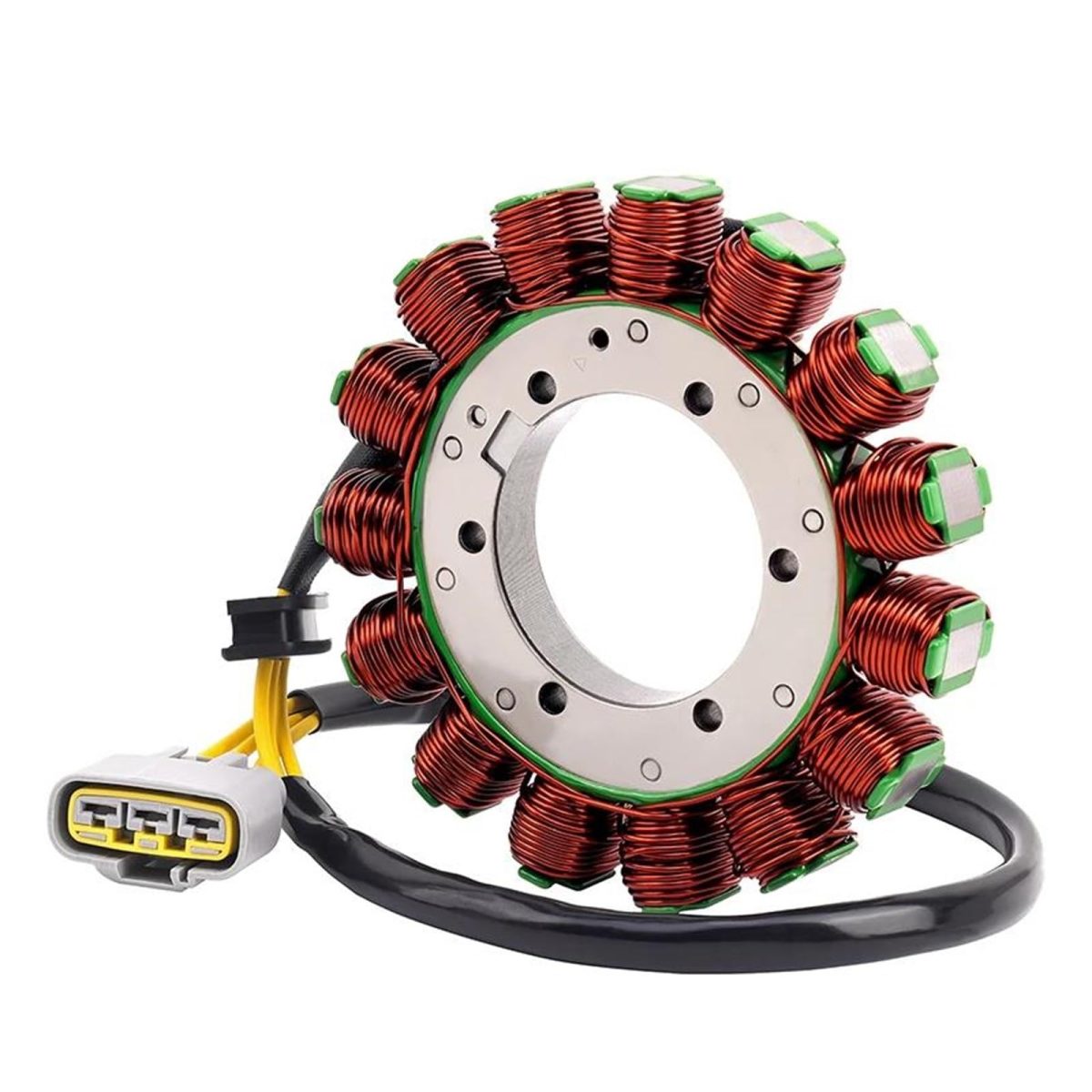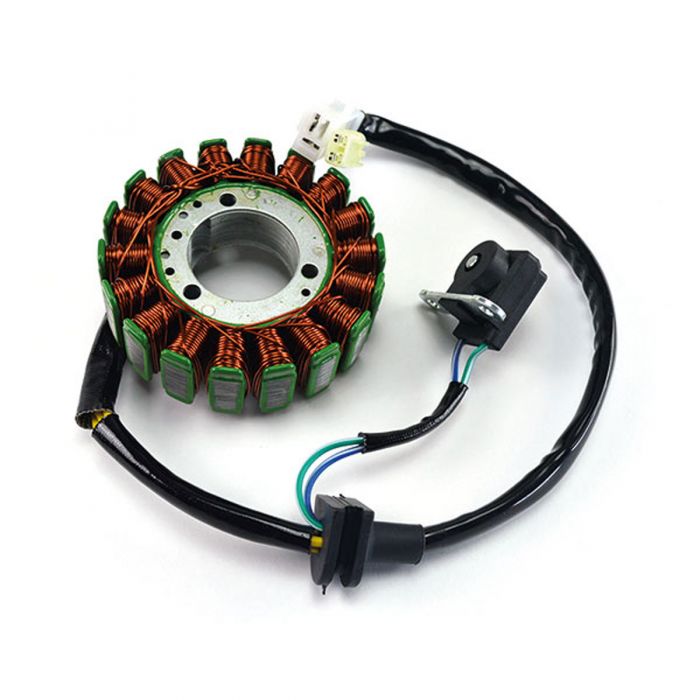Introduction:
When it comes to the electrical system of a motorcycle, one crucial component that often gets overlooked is the stator. The stator is responsible for generating the electrical power needed to run the motorcycle’s various systems, including the lights, ignition, and charging the battery. In this comprehensive guide, we will delve into the inner workings of motorcycle stators, their importance, common issues, and maintenance tips.
Part 1: What is a Motorcycle Stator?
Level 1: The Basics of a Motorcycle Stator
A motorcycle stator is a stationary component that forms a part of the charging system. It consists of a metal core with wire windings and is mounted within the engine casing. When the engine is running, the stator produces an alternating current (AC) that gets converted to direct current (DC) by the regulator-rectifier before being used to power the motorcycle’s electrical systems.
Level 2: Stator Types in Motorcycles
There are generally two types of stators used in motorcycles: single-phase and three-phase. Single-phase stators have only one set of wire windings and are commonly found in older or smaller displacement motorcycles. On the other hand, most modern motorcycles utilize three-phase stators, which are more efficient and produce a more stable electrical output.
Part 2: Importance of the Motorcycle Stator
Level 1: Powering the Electrical Systems
The primary function of the motorcycle stator is to generate electrical power for the motorcycle’s various systems. This includes providing power to the ignition system, lights, horn, and charging the battery. Without a functioning stator, the motorcycle would be unable to operate its electrical components.
Level 2: Charging the Battery
Another critical role of the stator is to charge the motorcycle’s battery while the engine is running. This ensures that the battery remains fully charged and capable of starting the engine and powering the electronics when the motorcycle is not running. A malfunctioning stator can lead to a drained battery and subsequent starting issues.
Part 3: Common Issues with Motorcycle Stators
Level 1: Overheating
One of the most common problems with motorcycle stators is overheating. This can occur due to excessive electrical loads, faulty wiring, or a failing regulator-rectifier. When the stator overheats, it can lead to insulation breakdown, wire damage, and ultimately, stator failure.
Level 2: Short Circuits
Short circuits within the stator windings can also cause issues. This can be a result of insulation breakdown, physical damage, or excessive heat. When a short circuit occurs, it can disrupt the flow of electrical current and cause the stator to malfunction.
Part 4: Signs of a Failing Motorcycle Stator
Level 1: Dim or Flickering Lights
One of the first signs of a failing stator is dim or flickering lights. This indicates that the stator is not producing enough electrical power to meet the demands of the motorcycle’s systems, resulting in a decrease in brightness or intermittent operation of the lights.
Level 2: Difficulty Starting the Motorcycle
As the stator’s output diminishes, the motorcycle’s battery may not receive enough charge, leading to starting difficulties. A failing stator can result in a weakened spark from the ignition system, making it harder to start the engine, especially when the motorcycle is cold.
Part 5: Maintenance Tips for Motorcycle Stators
Level 1: Regular Inspections
Periodic inspections of the stator and its associated components are crucial for early detection of potential issues. This includes visually inspecting the wiring, connectors, and the stator itself for any signs of damage, wear, or overheating.
Level 2: Proper Wiring and Grounding
Ensuring that the stator is properly wired and grounded is essential for its optimal performance and longevity. Loose or corroded connections can impair the stator’s ability to generate electrical power and lead to premature failure.
Part 6: Common Signs of a Faulty Motorcycle Stator
A motorcycle stator plays a crucial role in providing electrical power to the vehicle’s battery and other electrical components. When the stator malfunctions, it can lead to various issues that affect the overall performance of the motorcycle. Here are some common signs of a faulty motorcycle stator:
- Charging Issues: One of the most noticeable signs of a bad stator is when the motorcycle’s battery is not receiving a proper charge. This can lead to a dead battery, difficulty starting the bike, or dimming headlights and other electrical components.
- Engine Stalling: A malfunctioning stator can also cause the engine to stall unexpectedly, as it fails to provide sufficient electrical power to keep the engine running.
- Electrical Malfunctions: If you notice that the motorcycle’s electrical components such as the lights, turn signals, or horn are not working properly, it could be a sign of a faulty stator.
- Overheating: A failing stator may also cause the motorcycle to overheat, as it struggles to provide the necessary electrical power to keep the engine and other components running smoothly.
- Strange Noises: Sometimes, a malfunctioning stator can produce unusual noises, such as buzzing or rattling, indicating internal damage.
It’s important to address these signs of a faulty stator promptly to prevent further damage to the motorcycle’s electrical system and ensure safe and reliable operation.
Part 7: How to Test a Motorcycle Stator
Testing the motorcycle stator is essential for identifying any issues that may be affecting its performance. Here are the steps to follow when testing a motorcycle stator:
- Disconnect the Battery: Before testing the stator, it’s important to disconnect the motorcycle’s battery to prevent any electrical mishaps.
- Locate the Stator: The stator is typically located on the left side of the engine and is connected to the rotor assembly.
- Use a Multimeter: Set the multimeter to the resistance or ohms setting and connect the probes to the stator’s wiring harness. Check the manufacturer’s specifications for the correct resistance values. If the readings are not within the specified range, it indicates a faulty stator.
- Check for Grounding: Test for continuity between the stator’s wires and the engine or frame. If there is continuity, it indicates a grounding issue, which can affect the stator’s performance.
- Test the Voltage Output: Use a voltmeter to test the stator’s voltage output. Rev the engine to different RPM levels and check if the voltage output increases accordingly. If the voltage output is inconsistent or nonexistent, it indicates a problem with the stator.
By following these steps, motorcycle owners can determine if their stator is functioning properly and address any issues that may be affecting its performance.
Part 8: Replacing a Motorcycle Stator
Replacing a motorcycle stator can be a complex and labor-intensive task, but with the right tools and knowledge, it is possible to do it yourself. Here are the general steps to follow when replacing a motorcycle stator:
- Prepare the Motorcycle: Begin by disconnecting the battery and removing any necessary components to access the stator, such as the side cover and rotor.
- Remove the Old Stator: Once the stator is accessible, disconnect the wiring harness and mounting bolts to remove the old stator from the motorcycle.
- Install the New Stator: Carefully position the new stator in place and secure it with the mounting bolts. Reconnect the wiring harness and ensure that all connections are secure.
- Reassemble the Motorcycle: Put back any components that were removed to access the stator, such as the side cover and rotor. Reconnect the battery and test the motorcycle to ensure that the new stator is functioning properly.
It’s important to consult the motorcycle’s service manual for specific instructions and torque specifications when replacing the stator. If you’re not confident in your ability to replace the stator yourself, it’s best to seek professional help to ensure the job is done correctly.
Conclusion:
The motorcycle stator may not always be in the spotlight, but it plays a critical role in the functionality of the motorcycle’s electrical system. Understanding the basics of the stator, its importance, common issues, and maintenance tips can help motorcycle enthusiasts keep their bikes running smoothly. By being proactive in addressing stator-related issues, riders can avoid potential breakdowns and enjoy a hassle-free riding experience.



